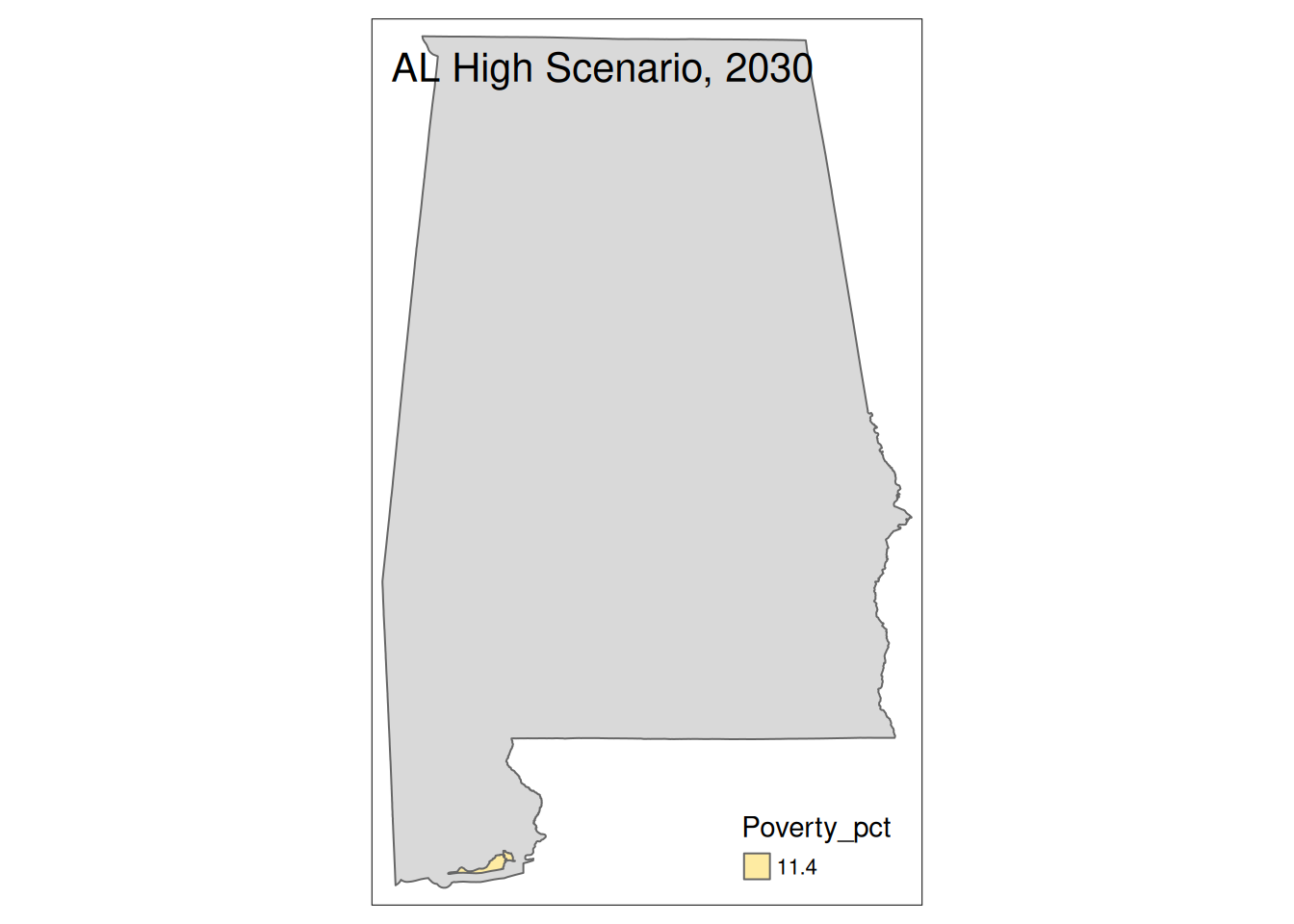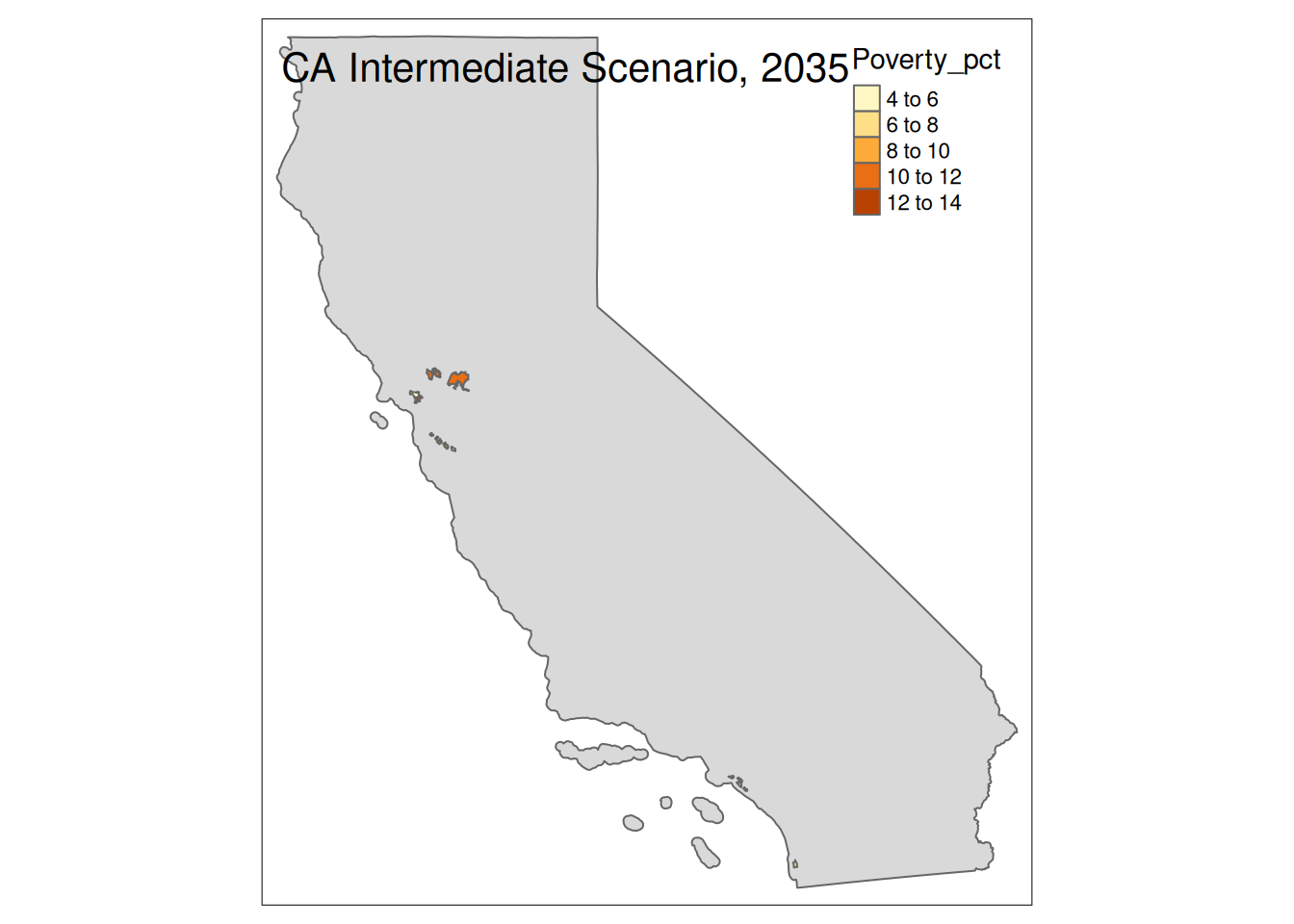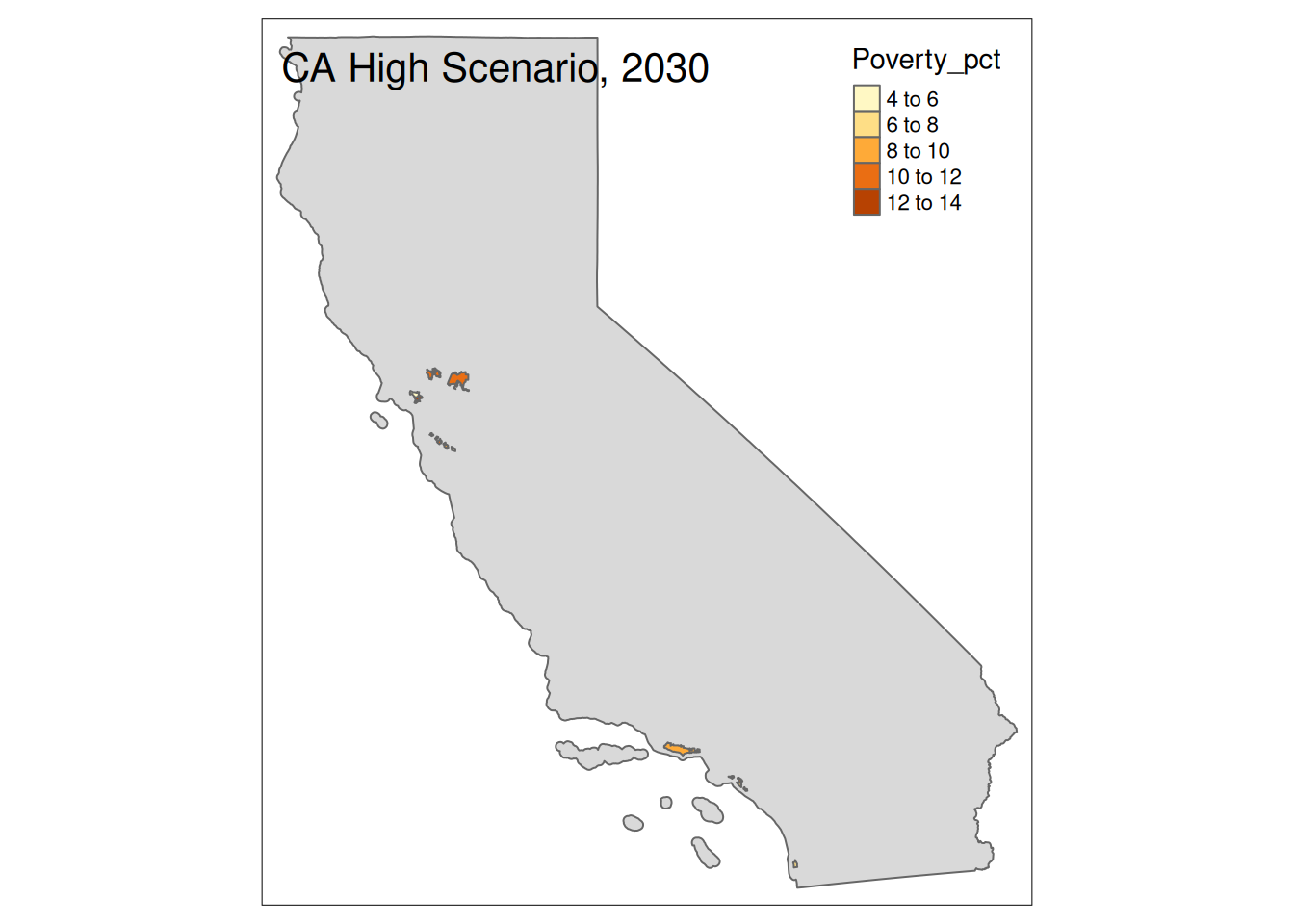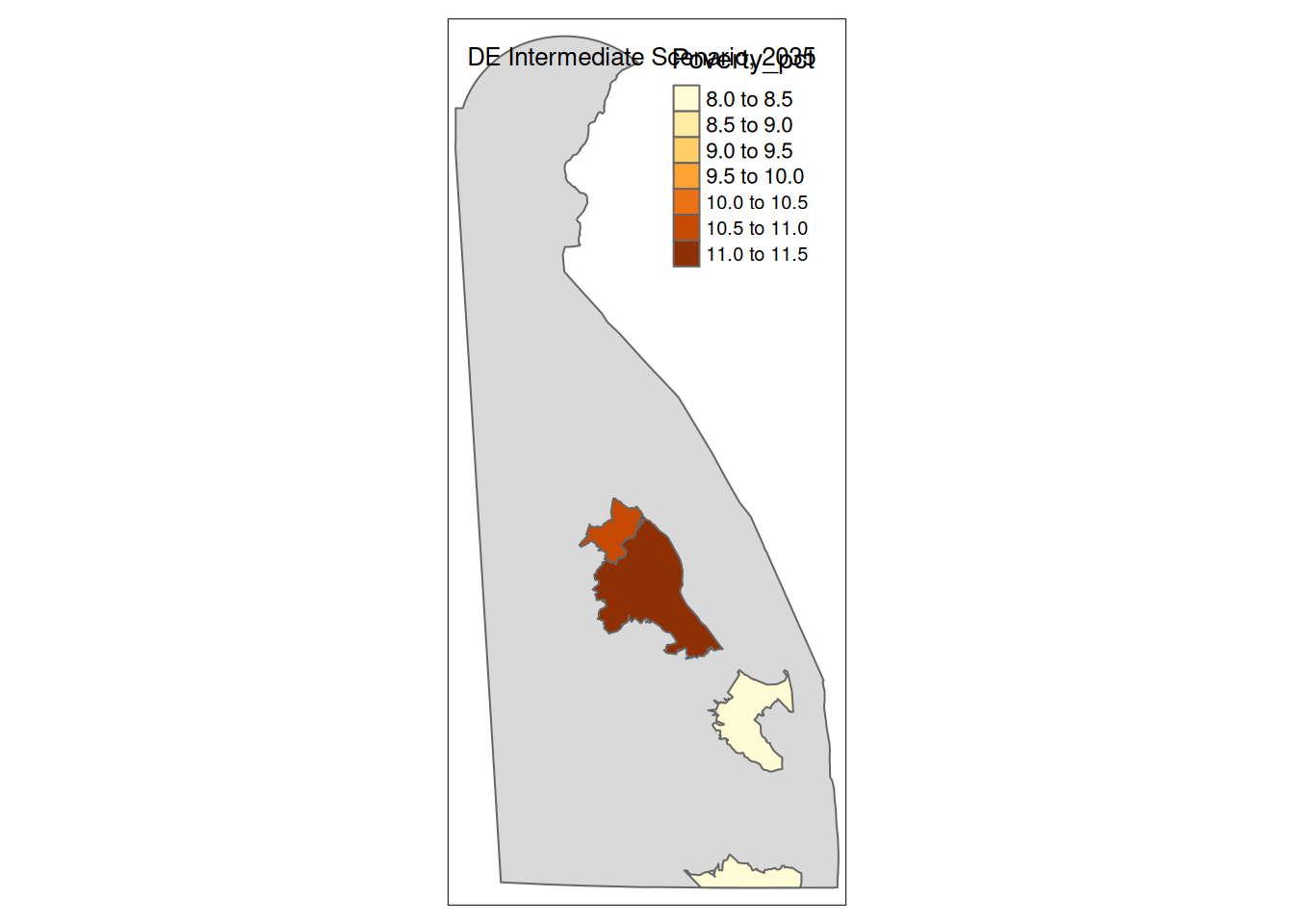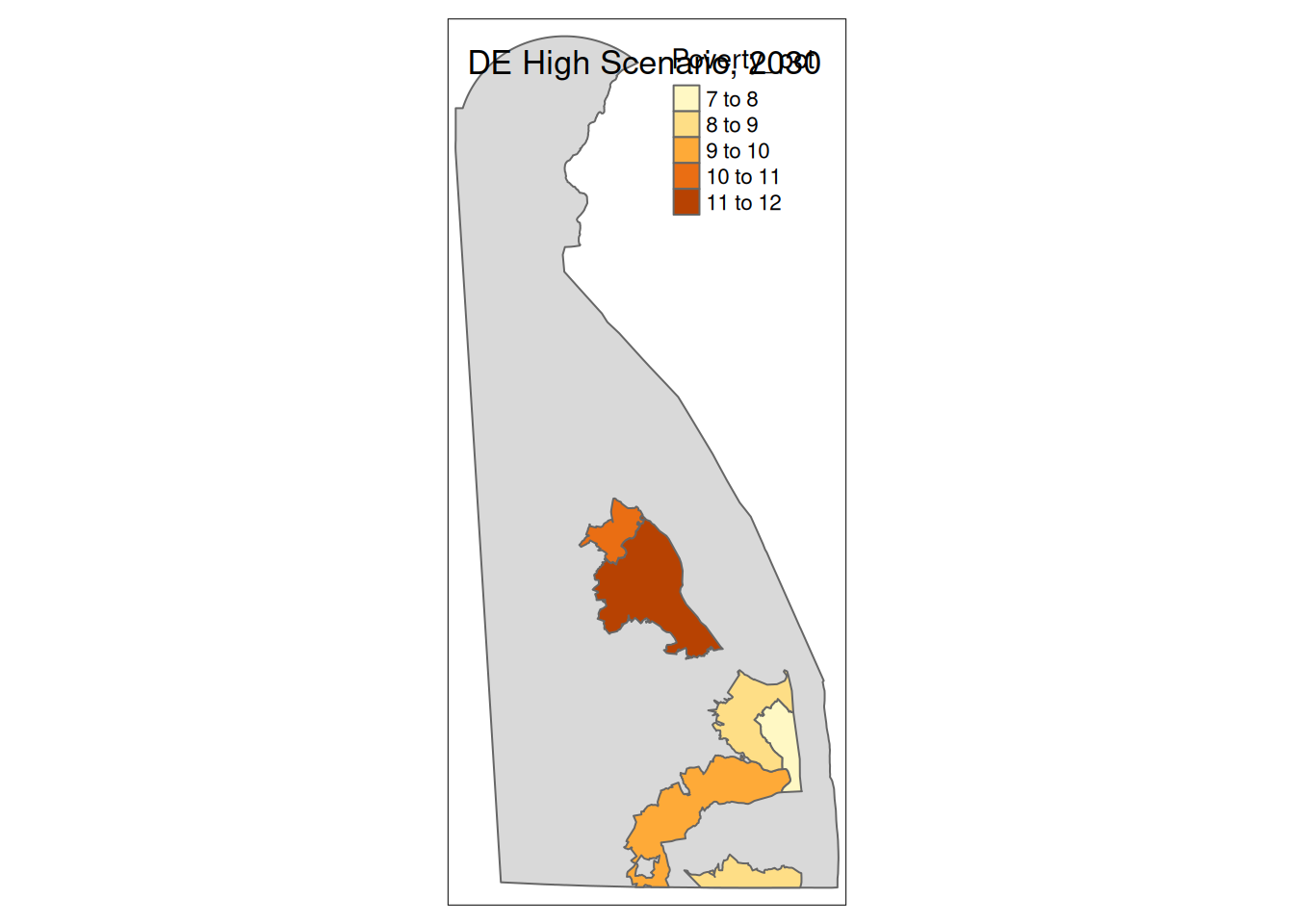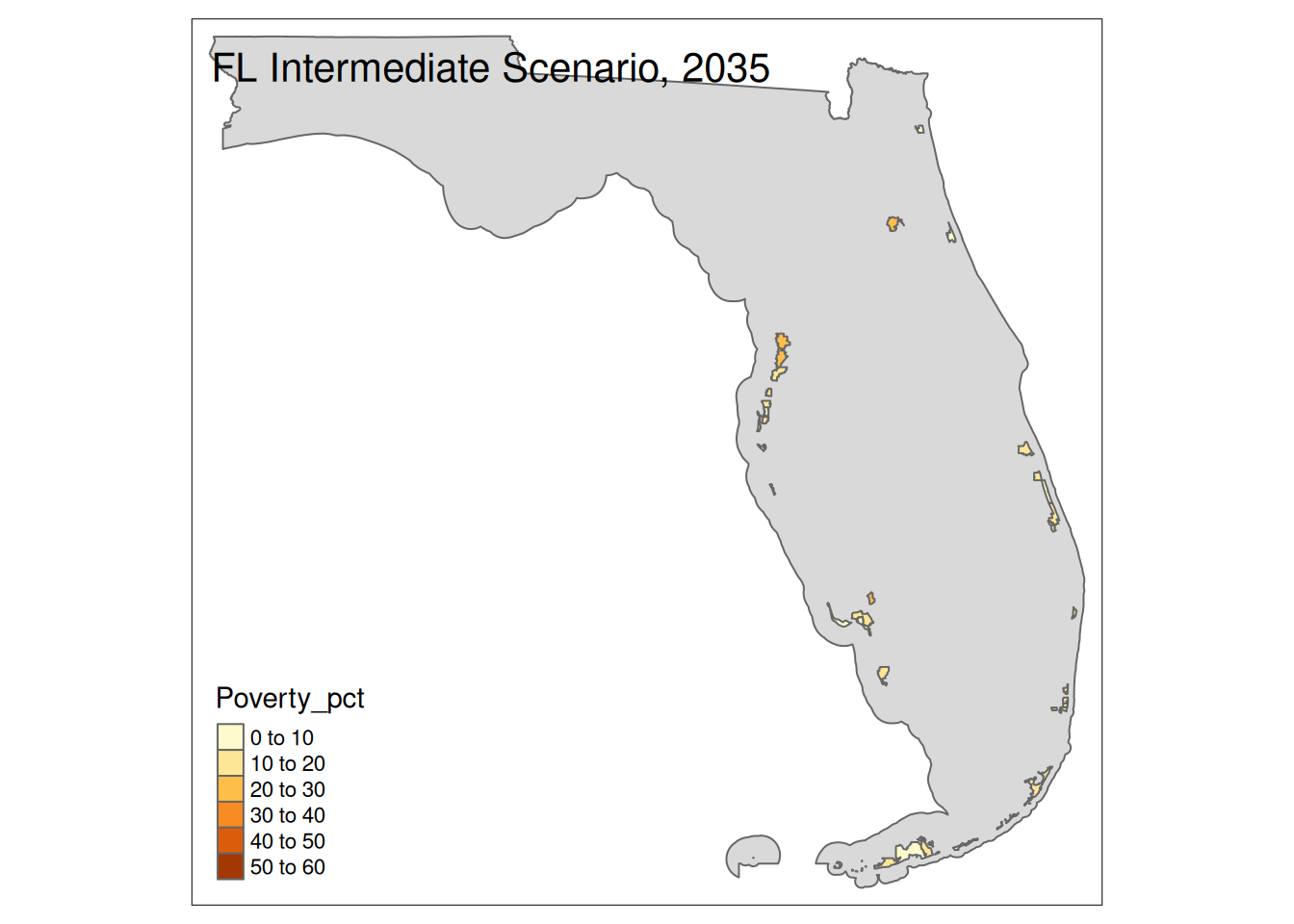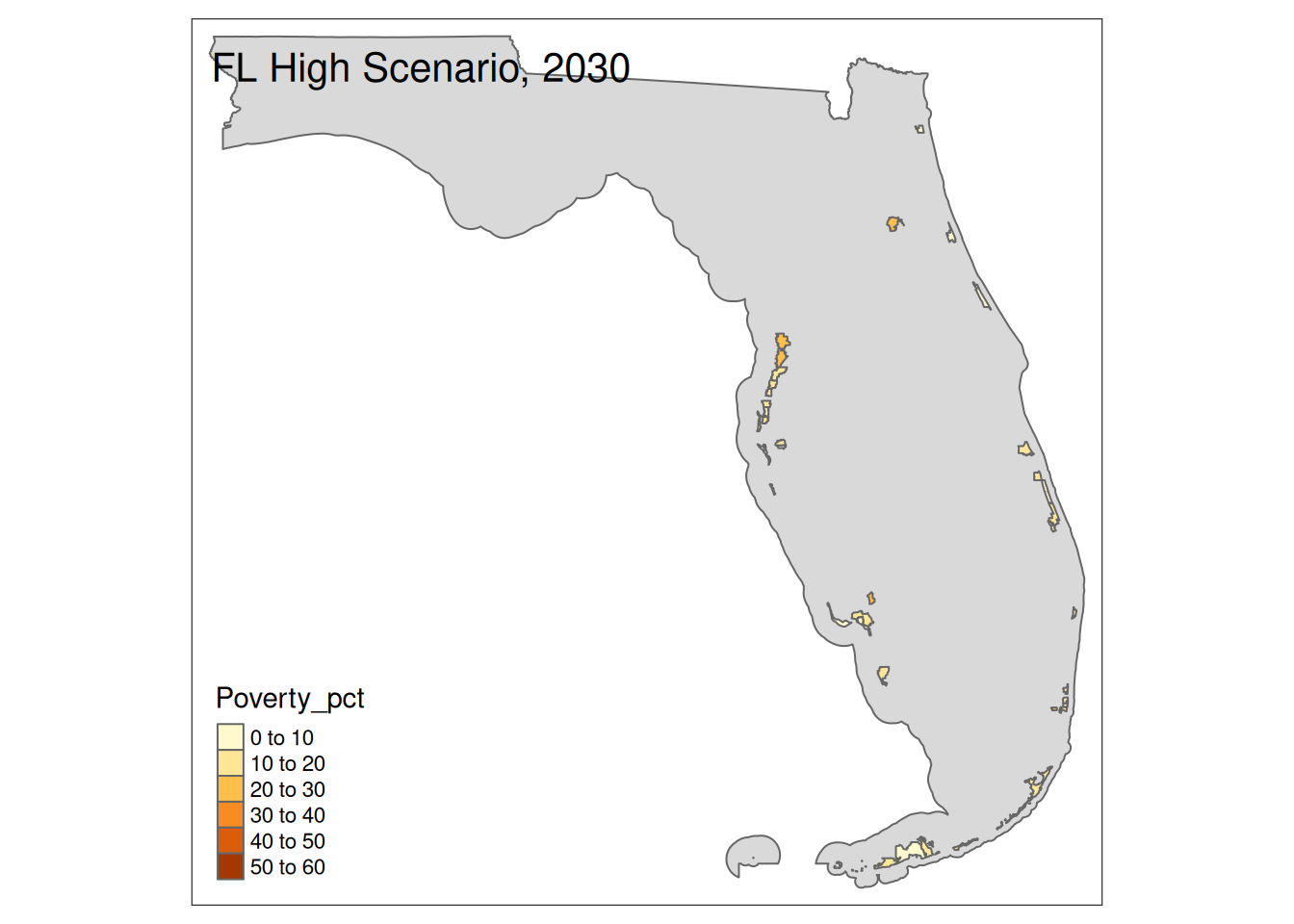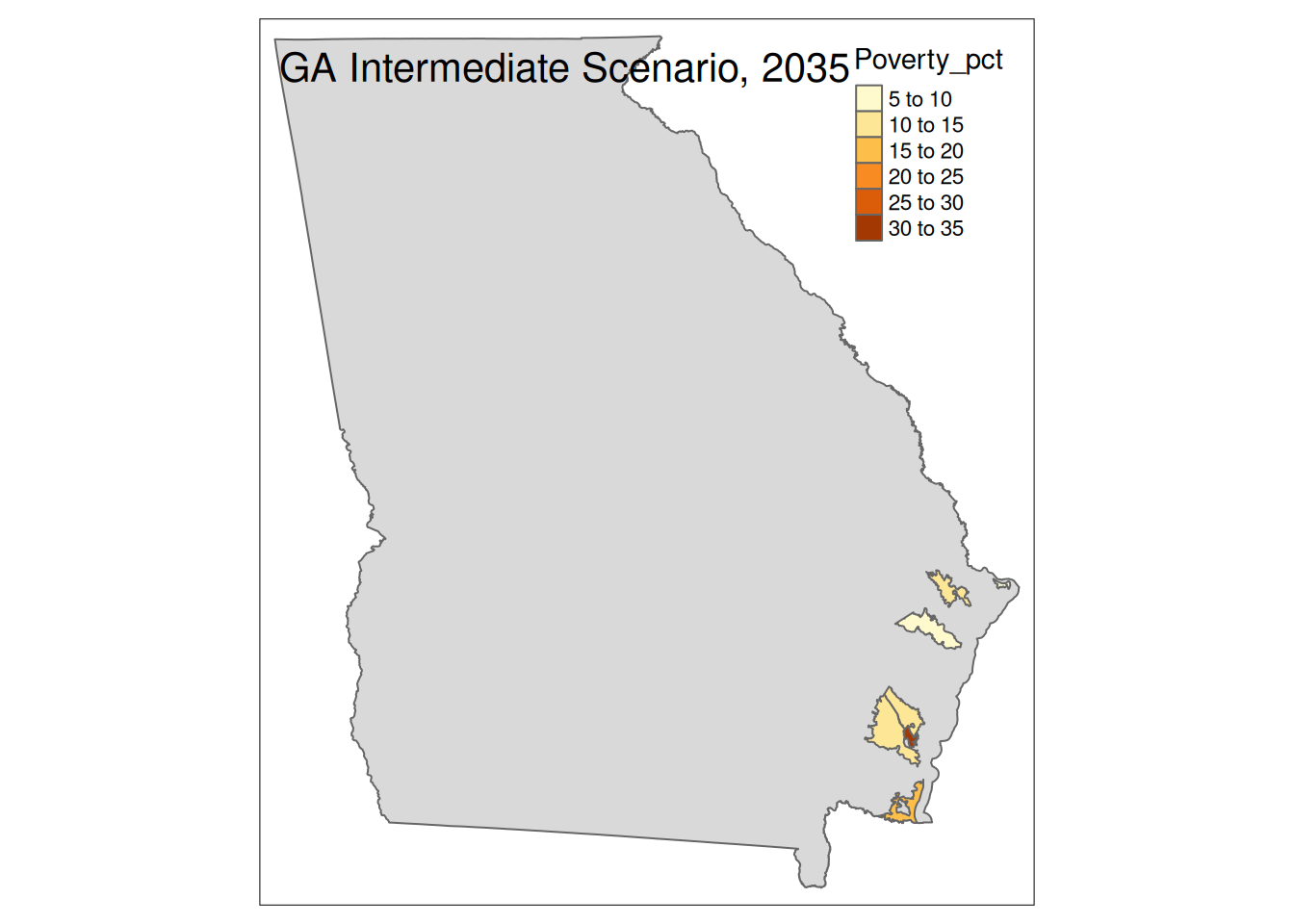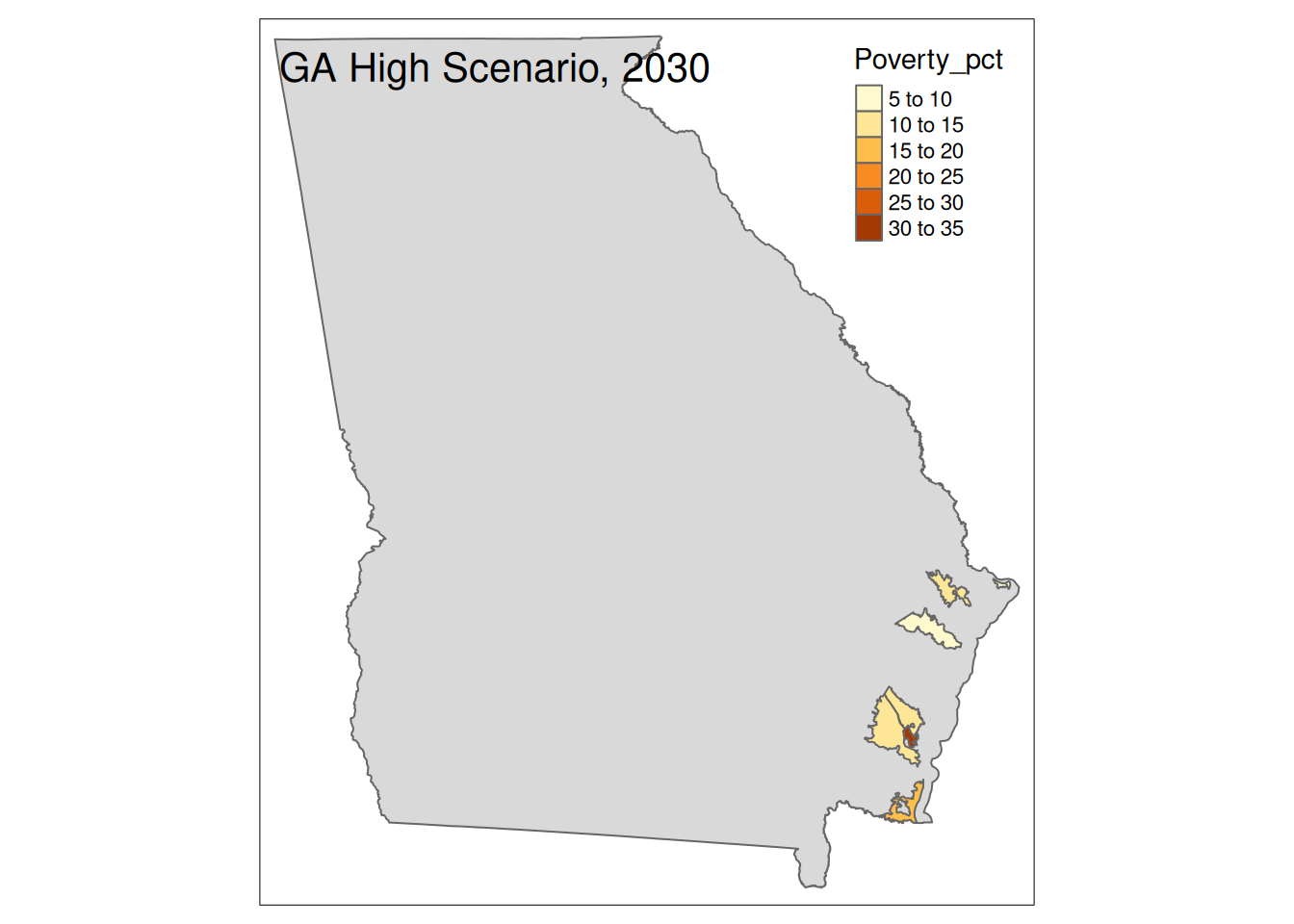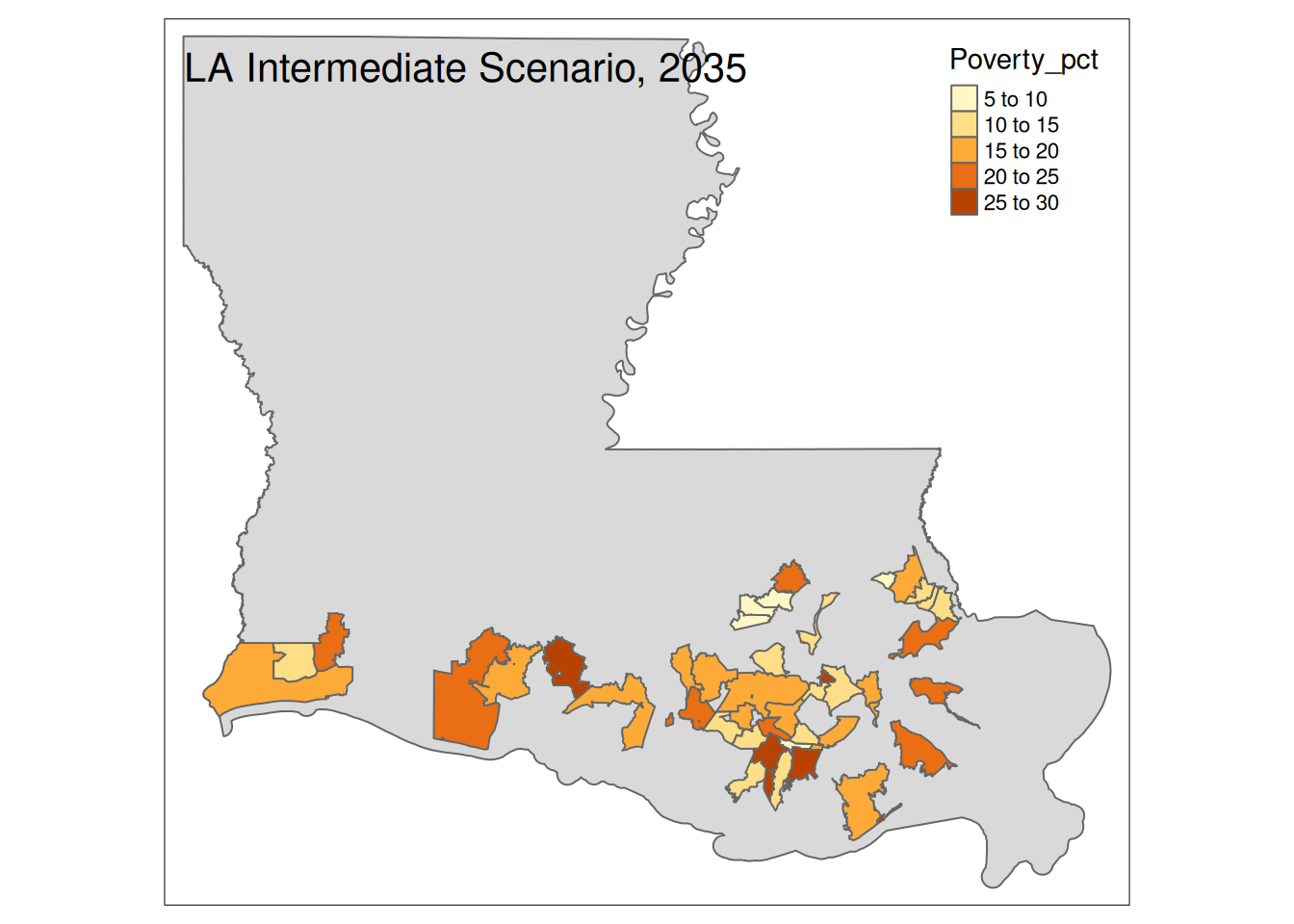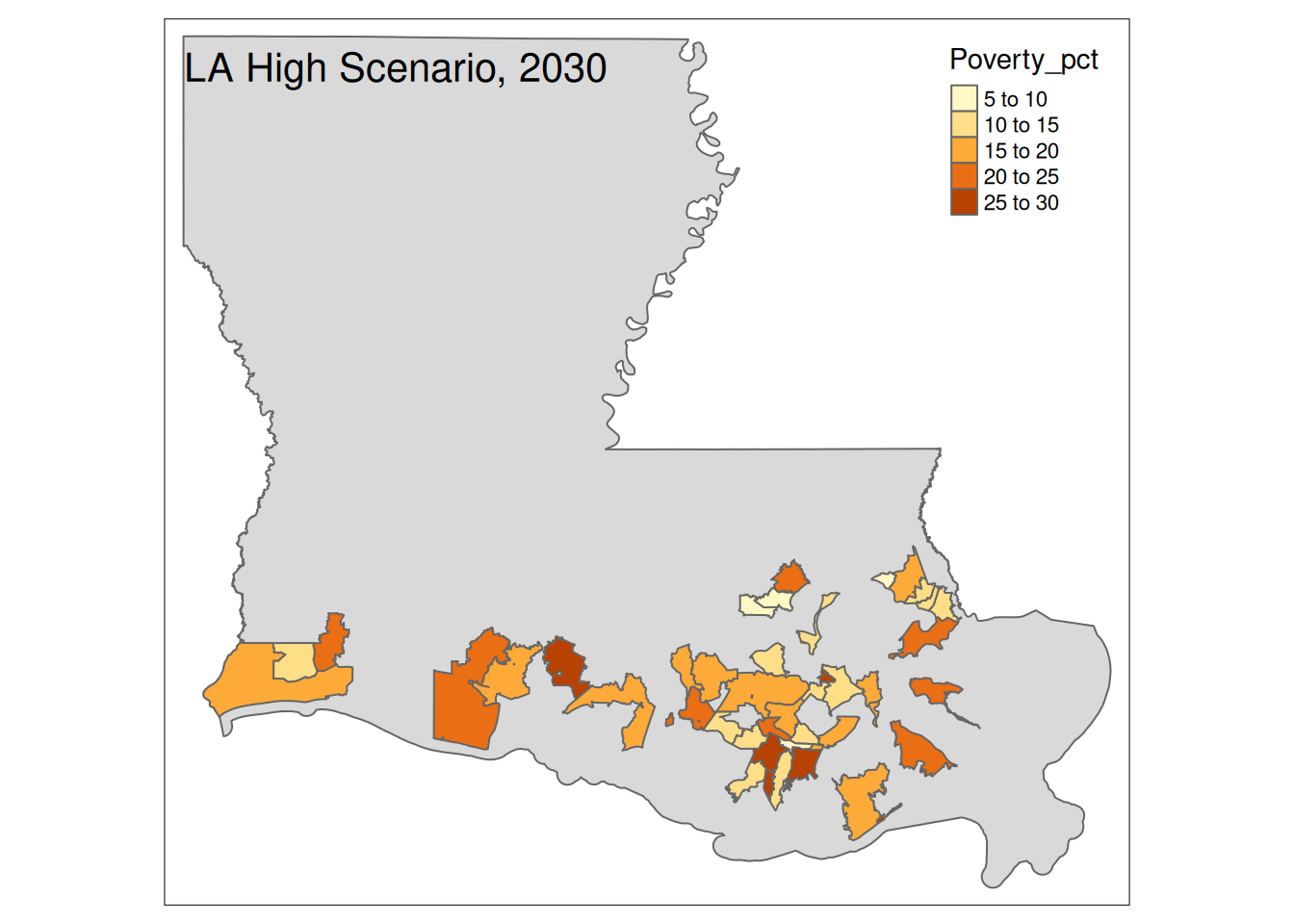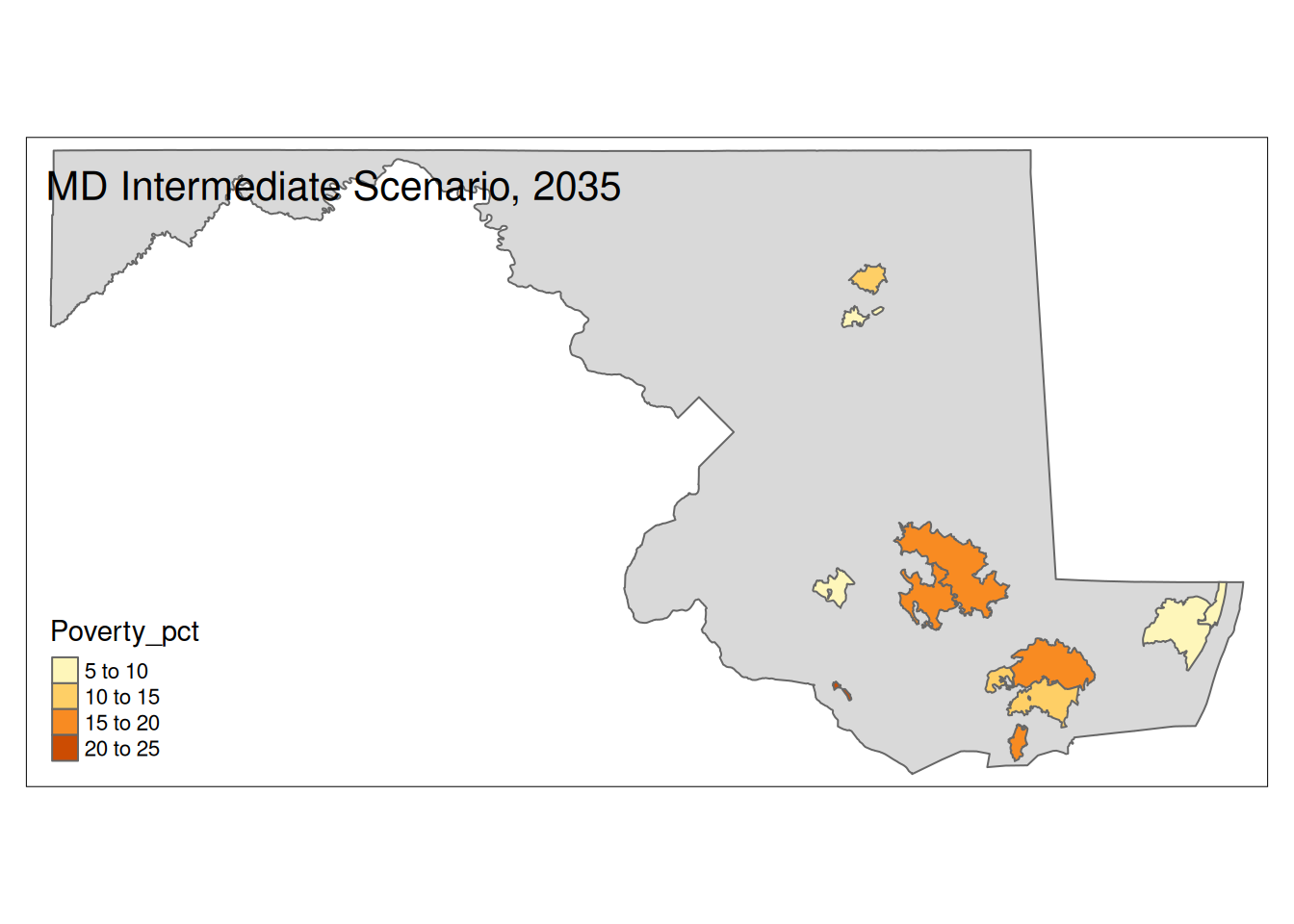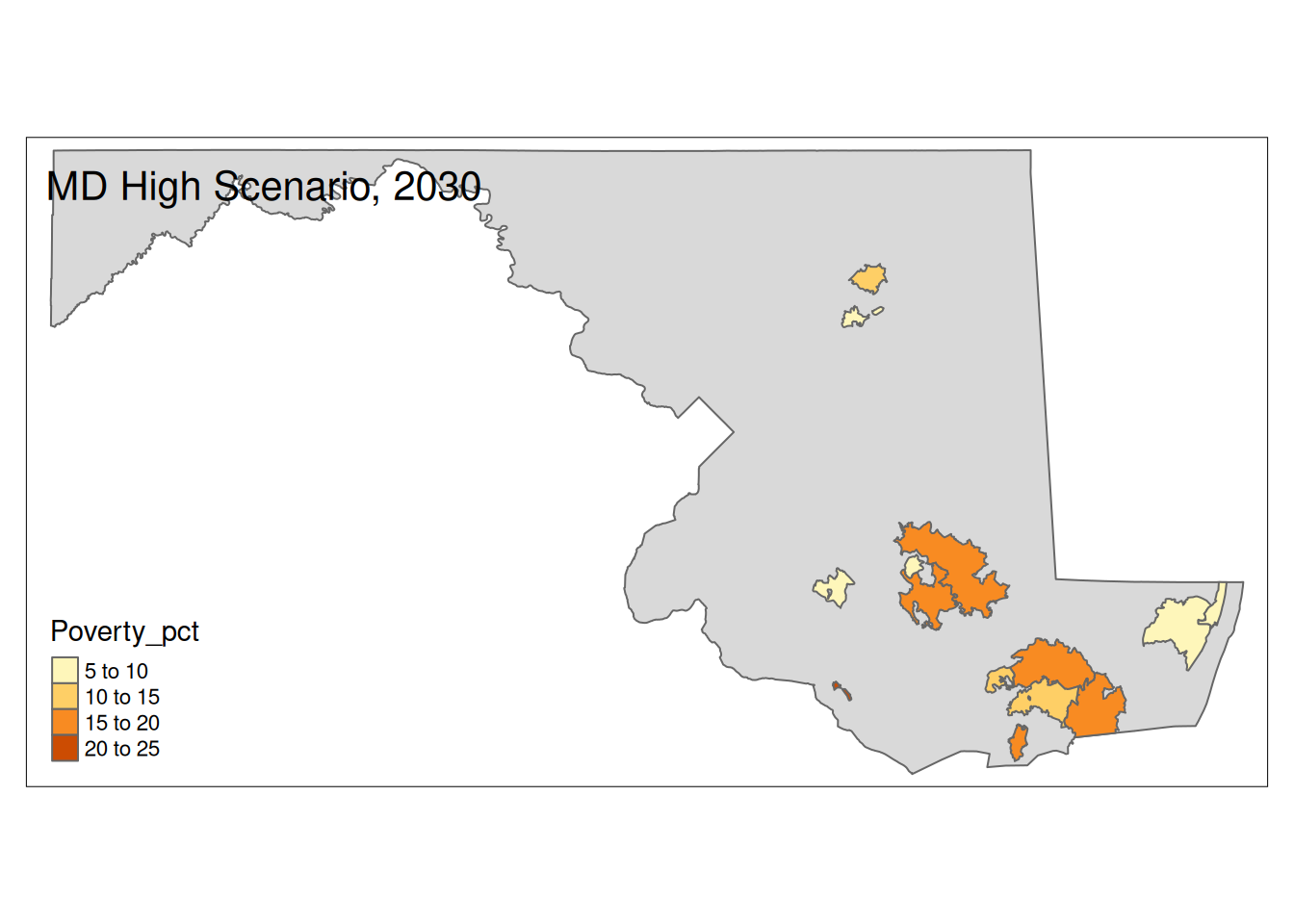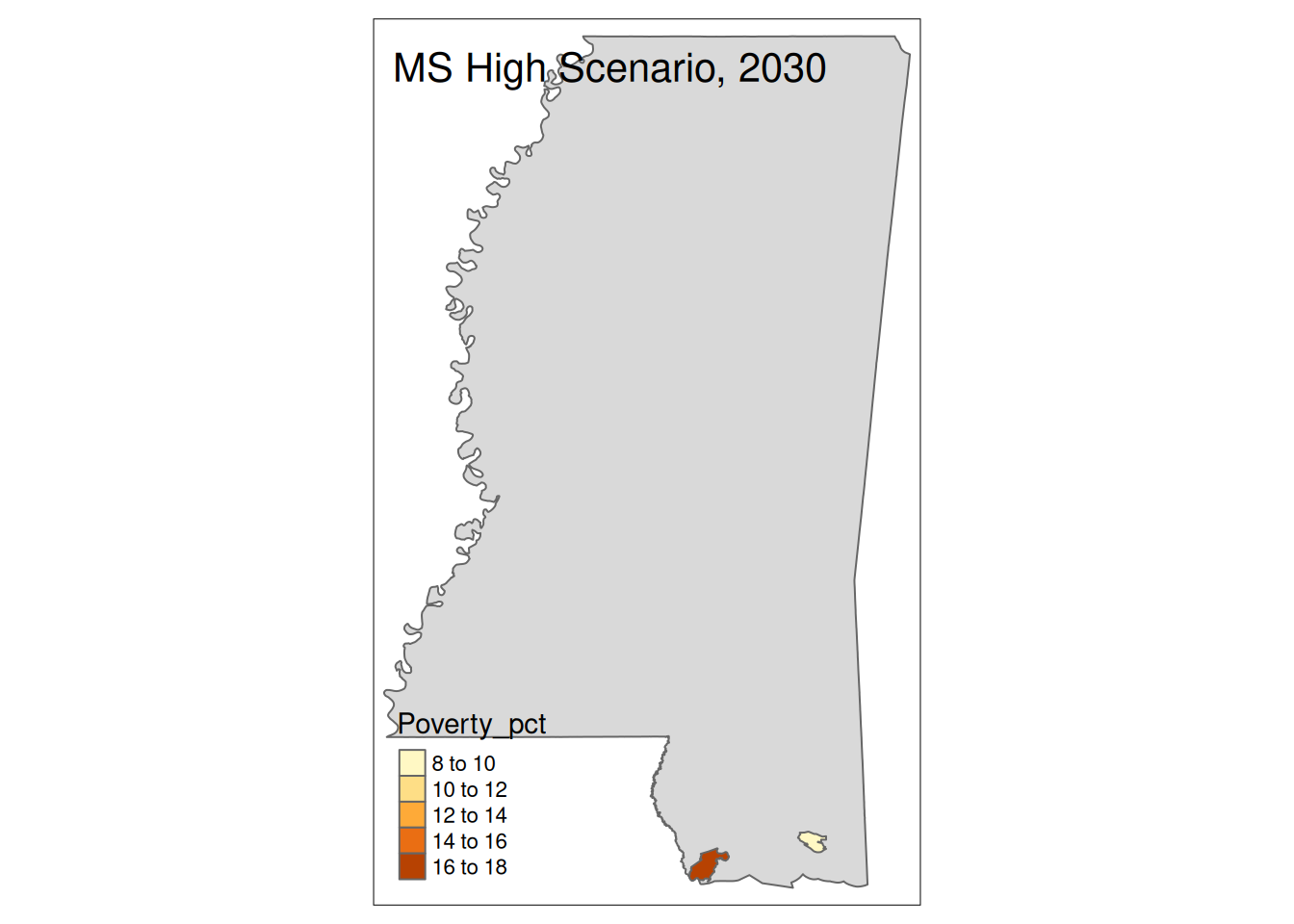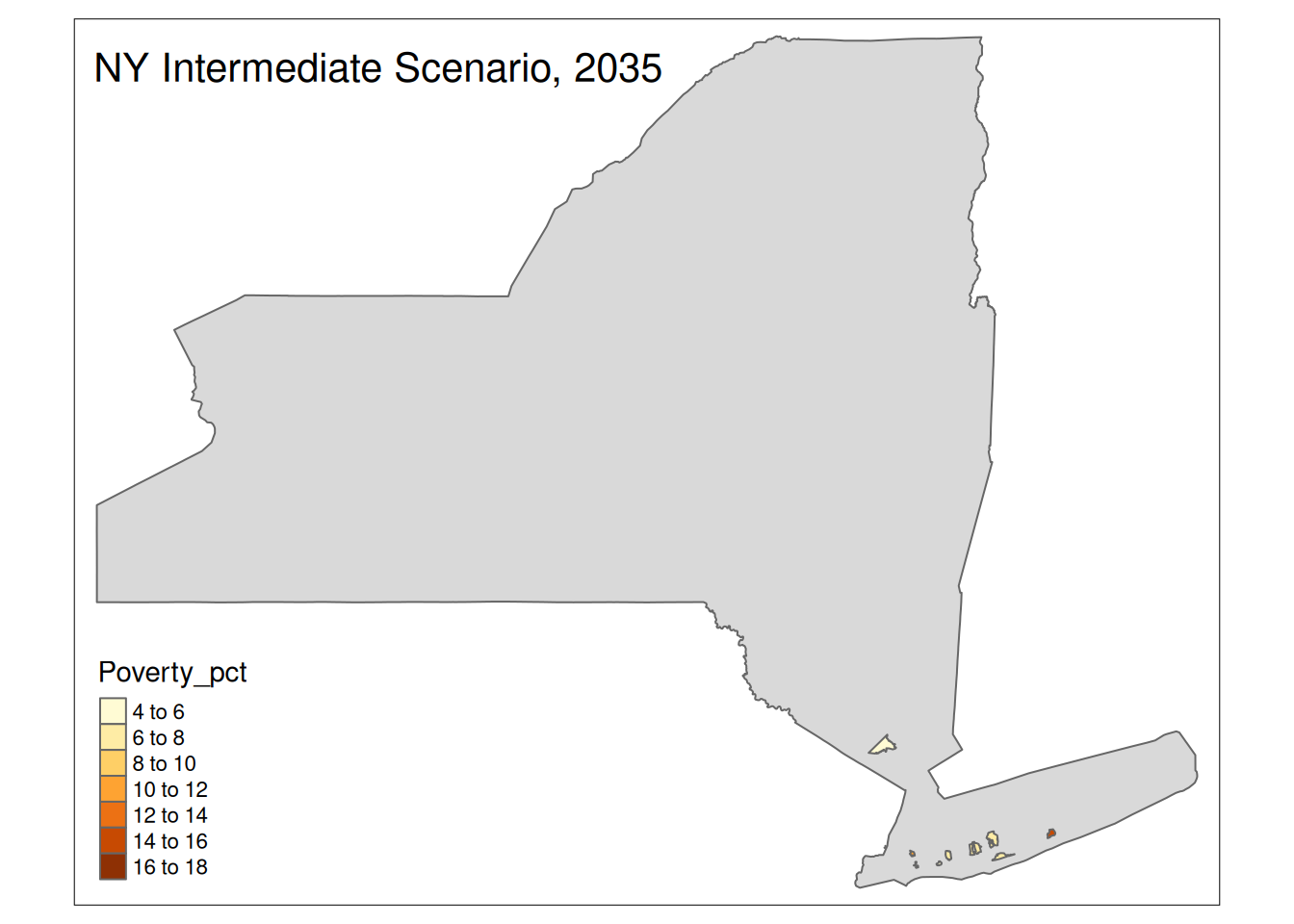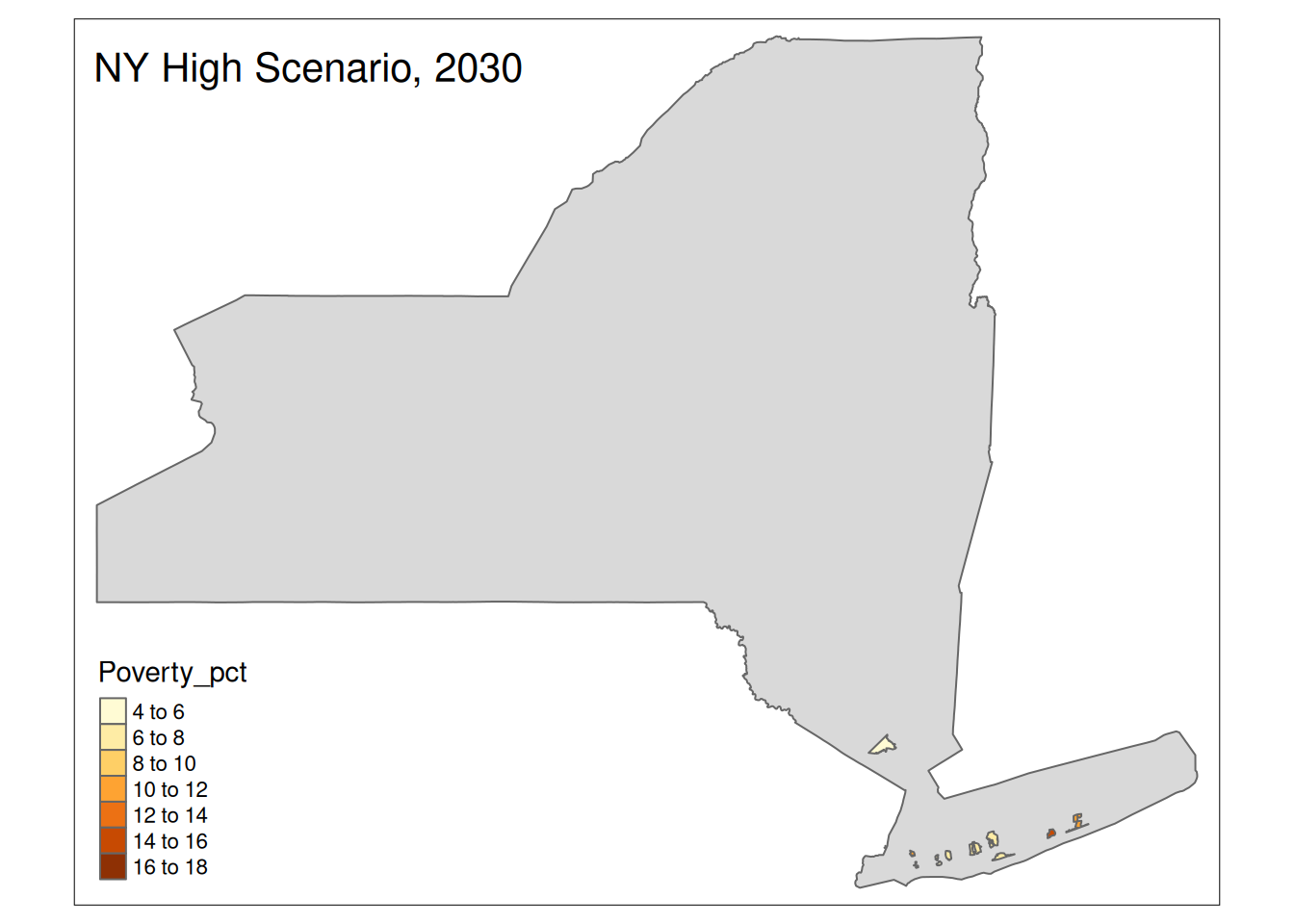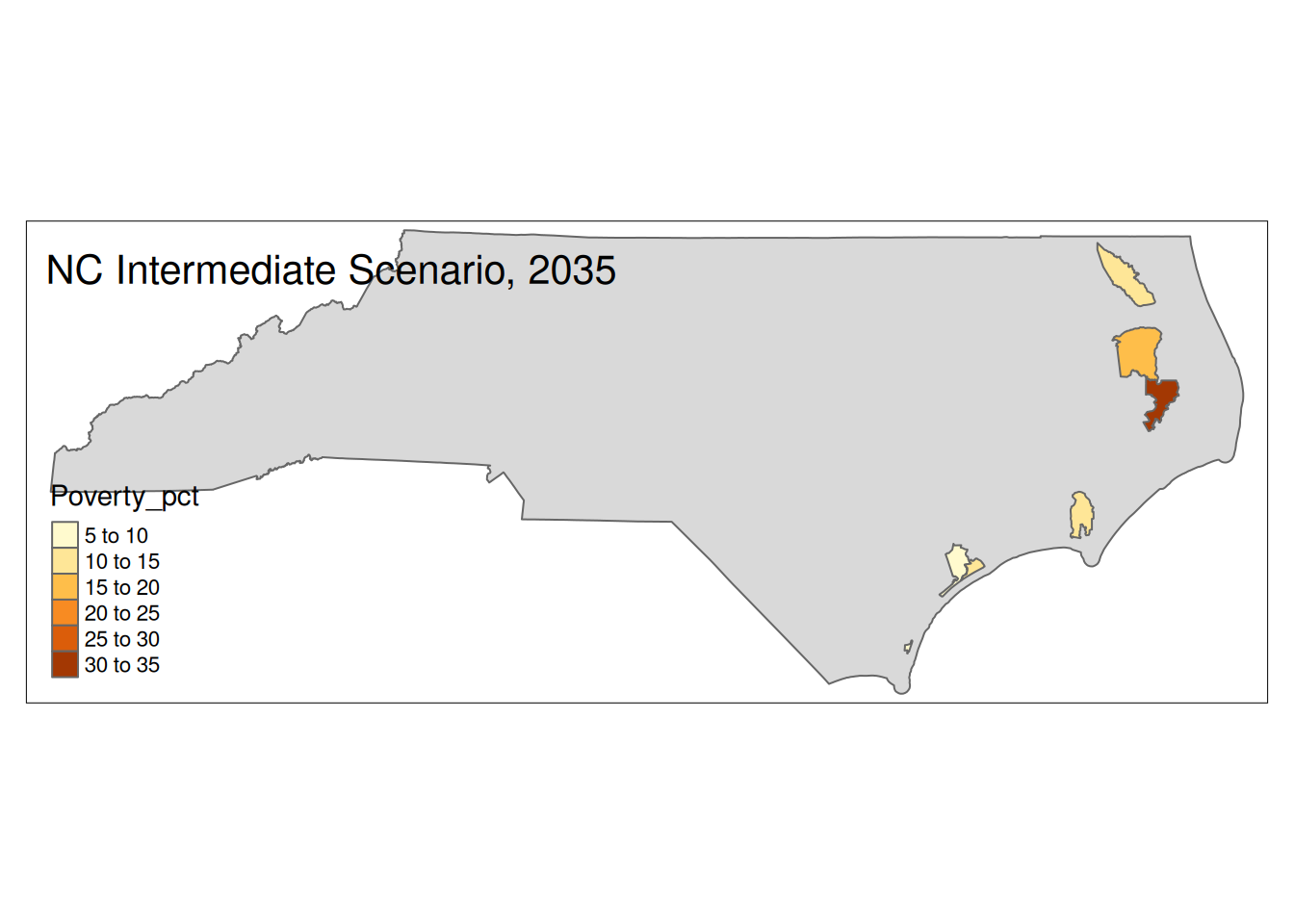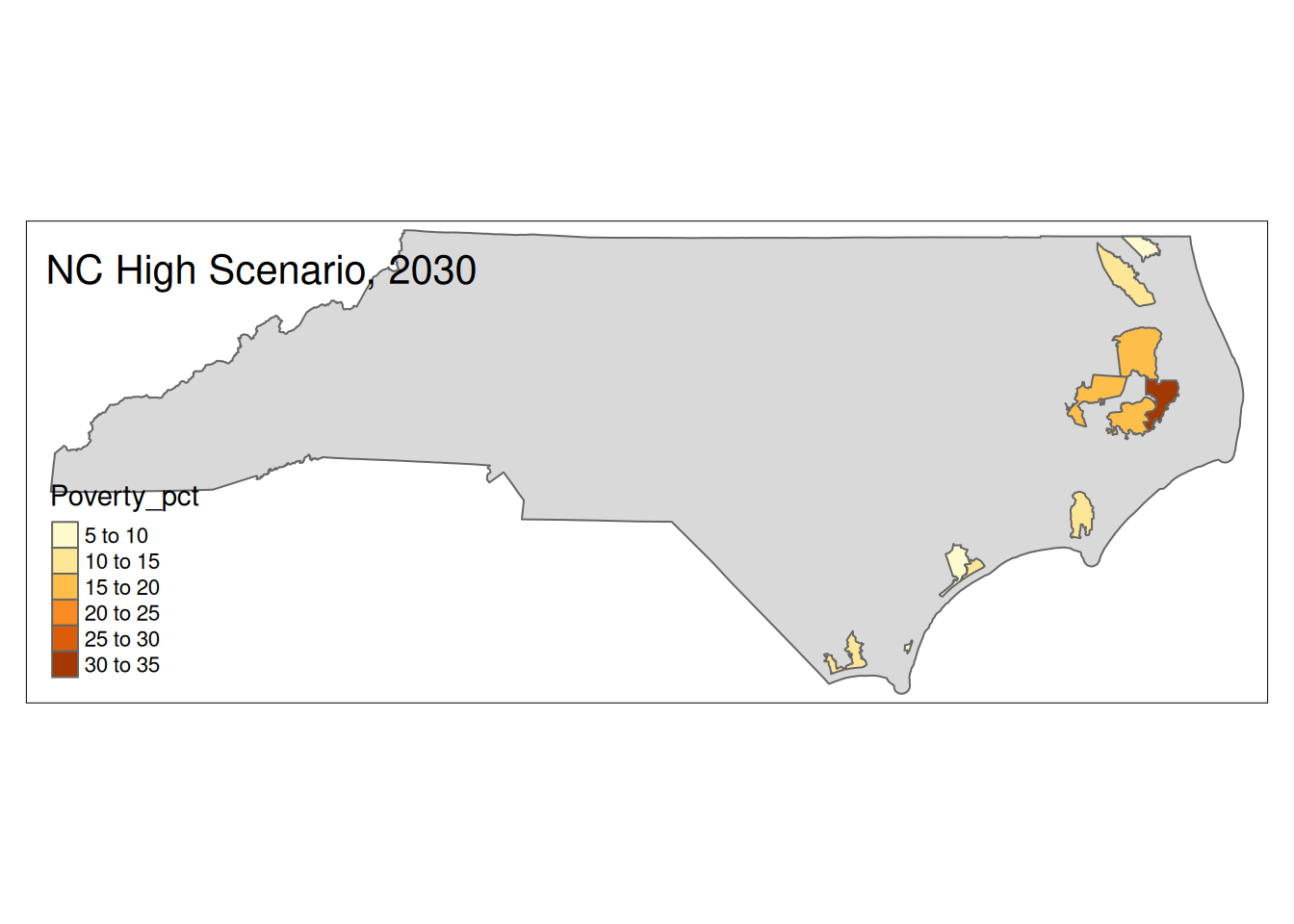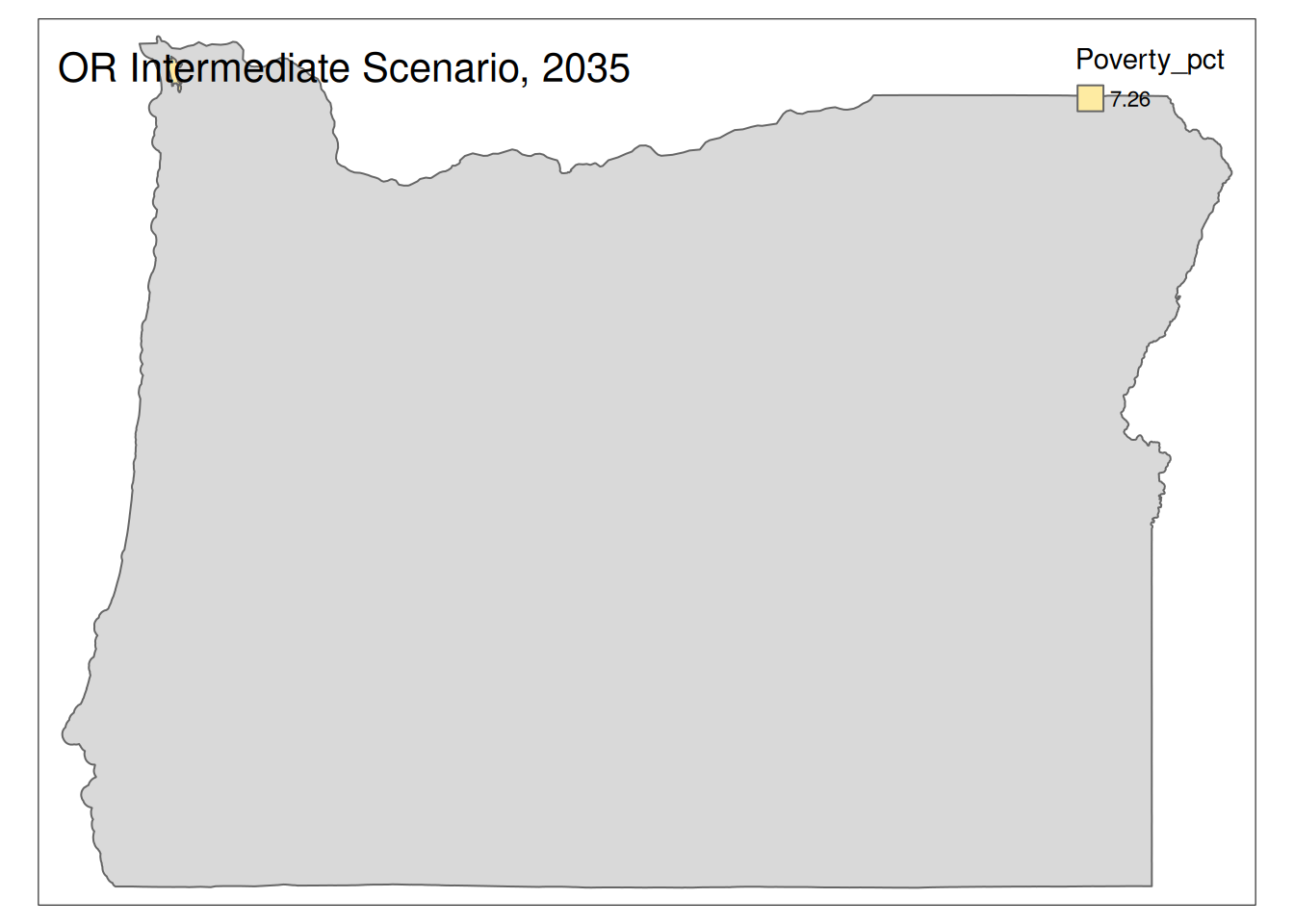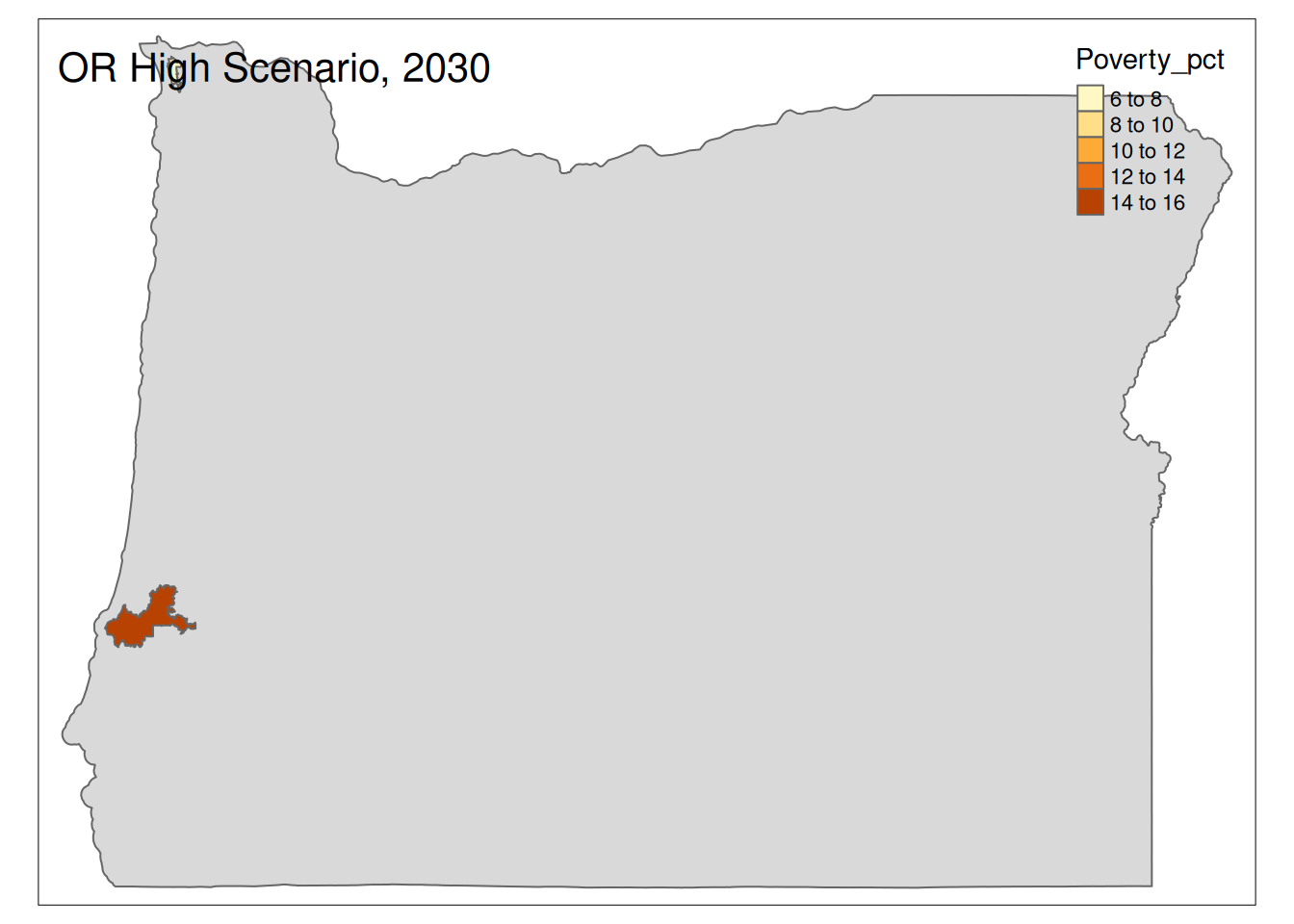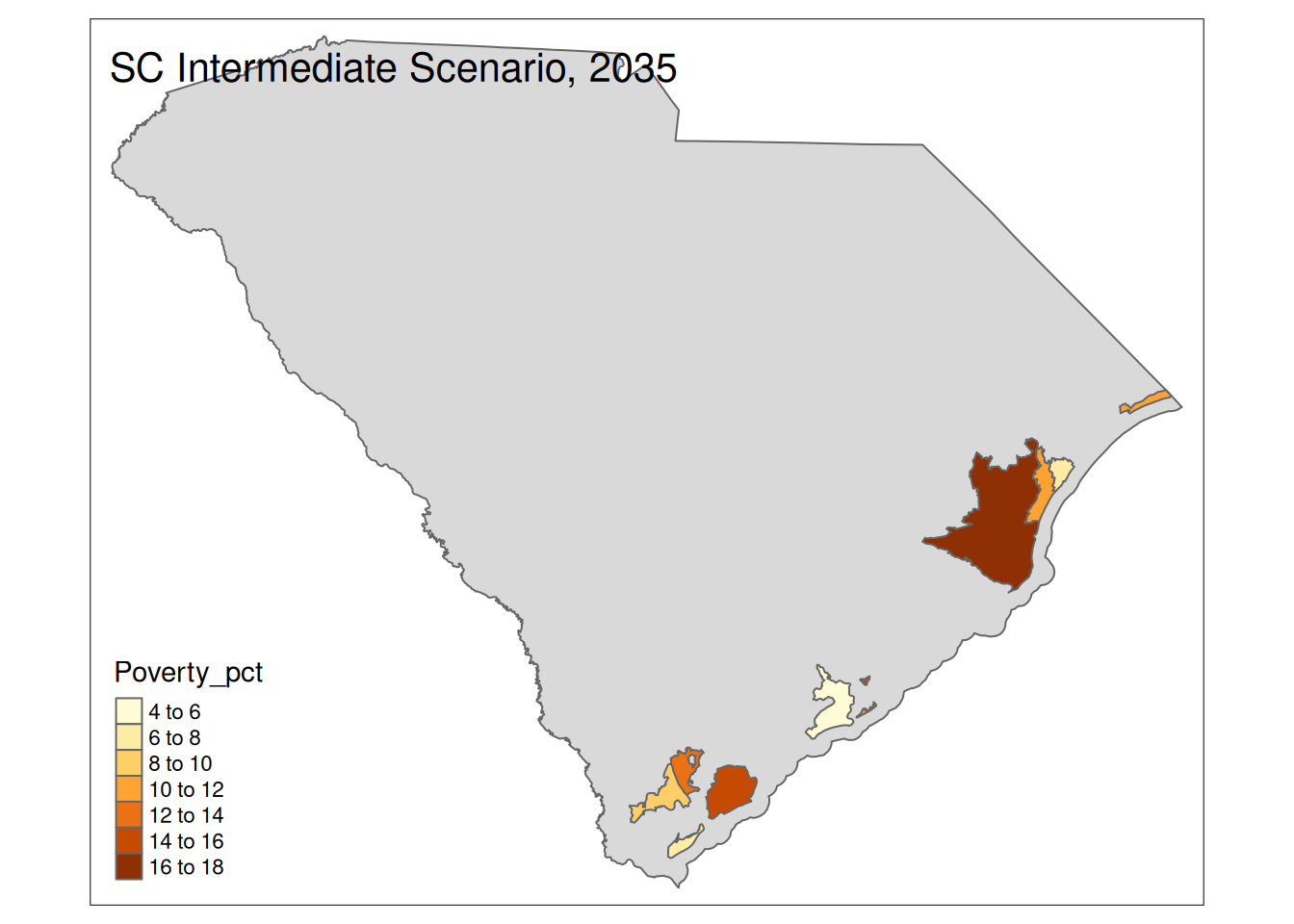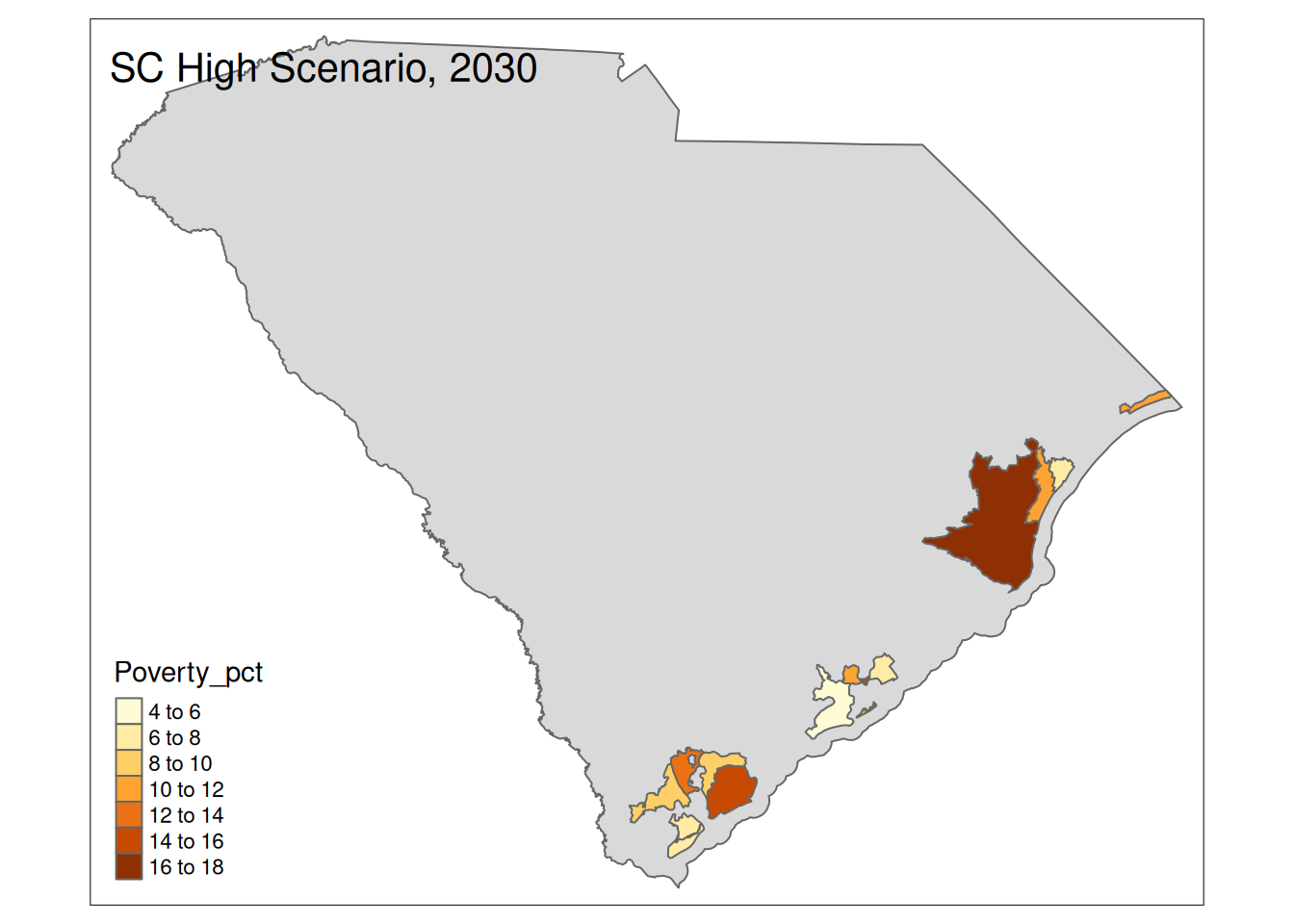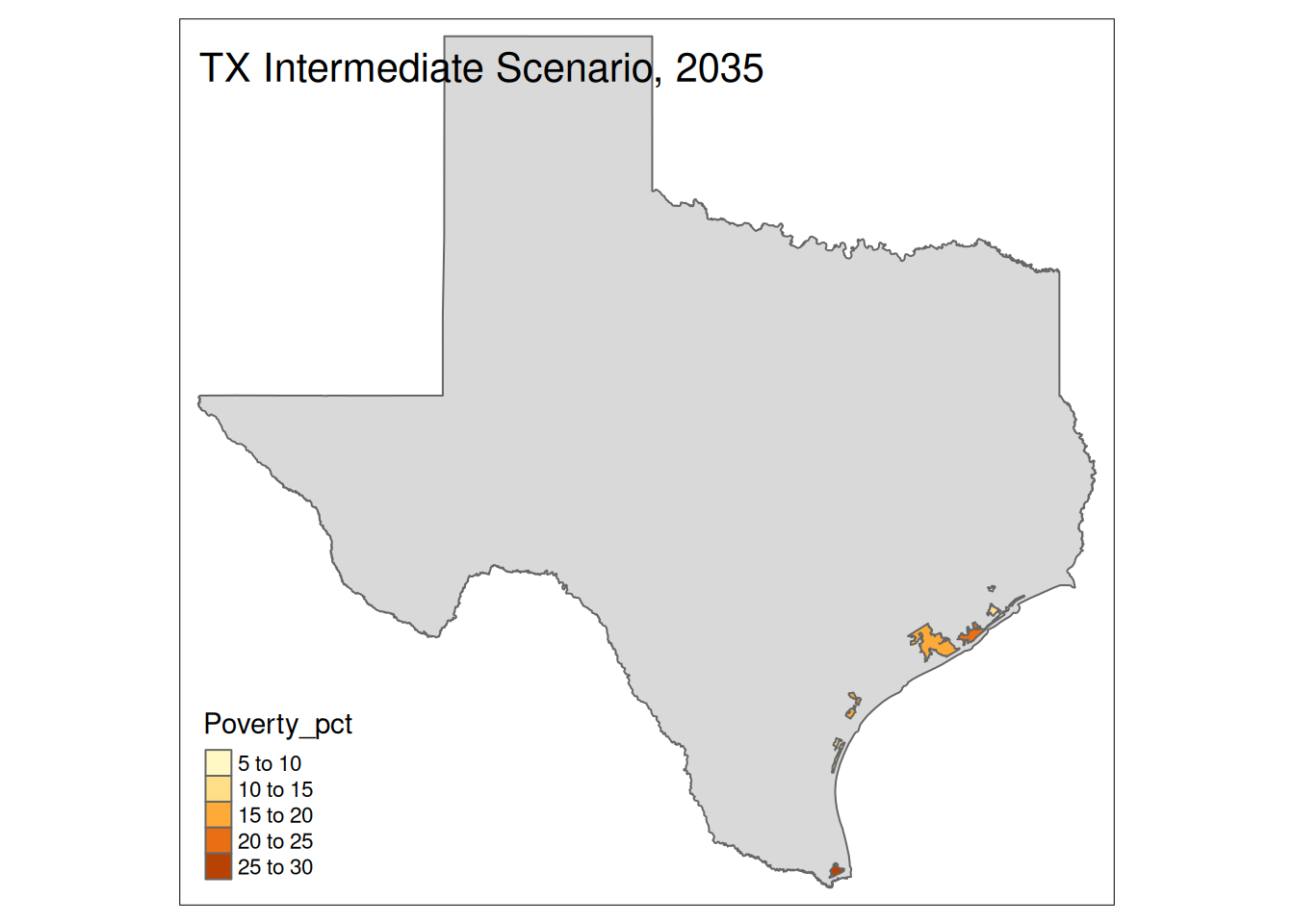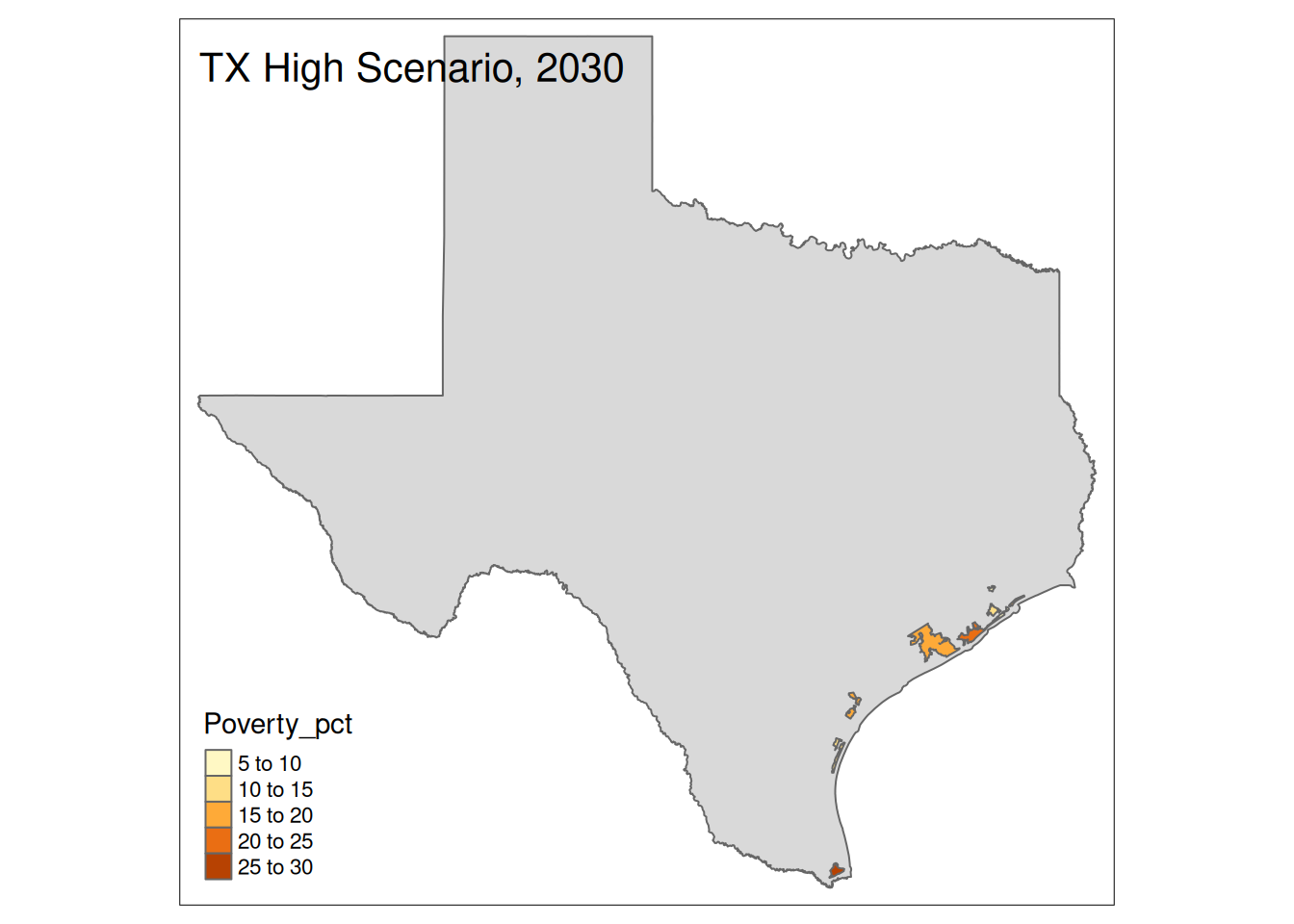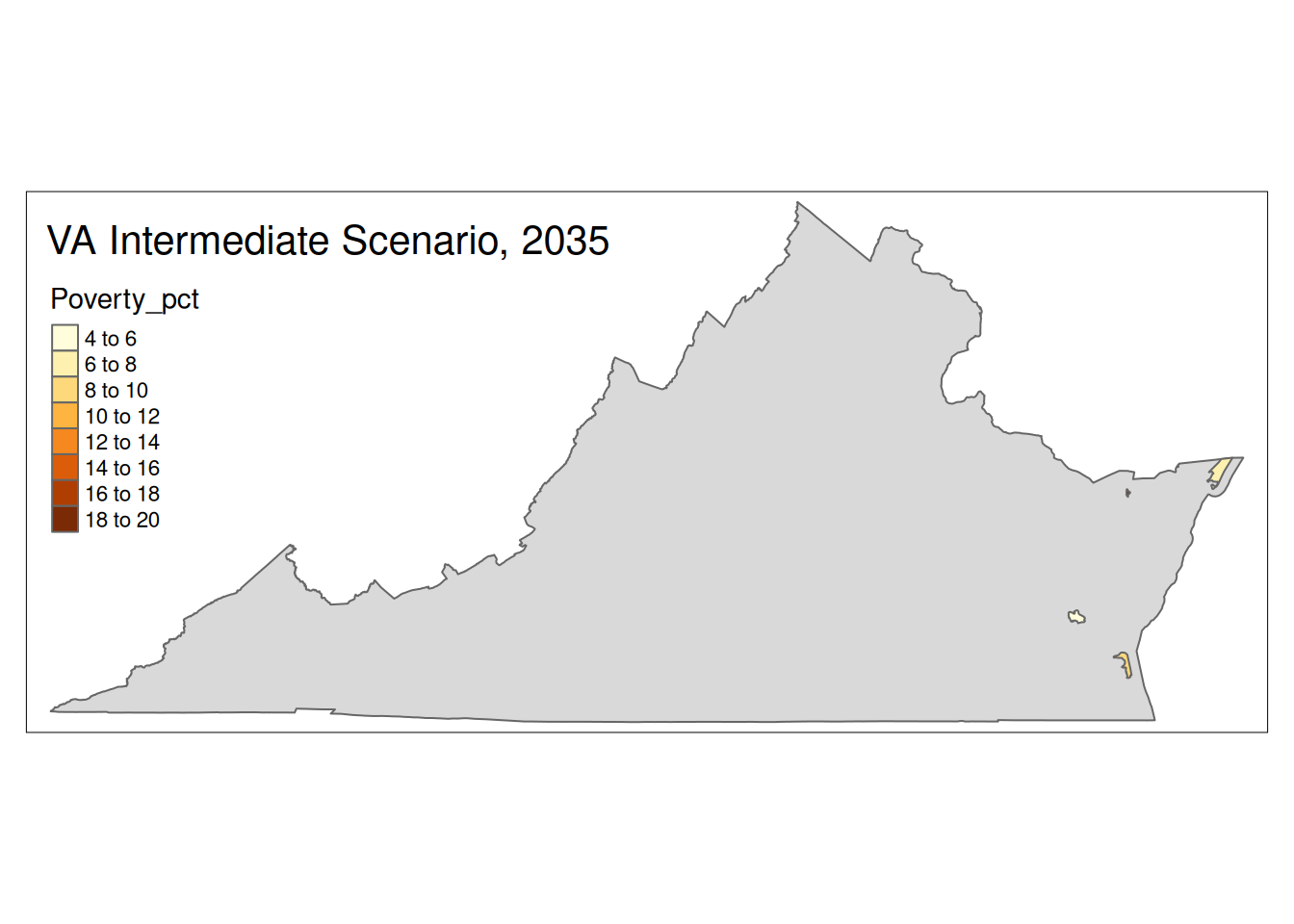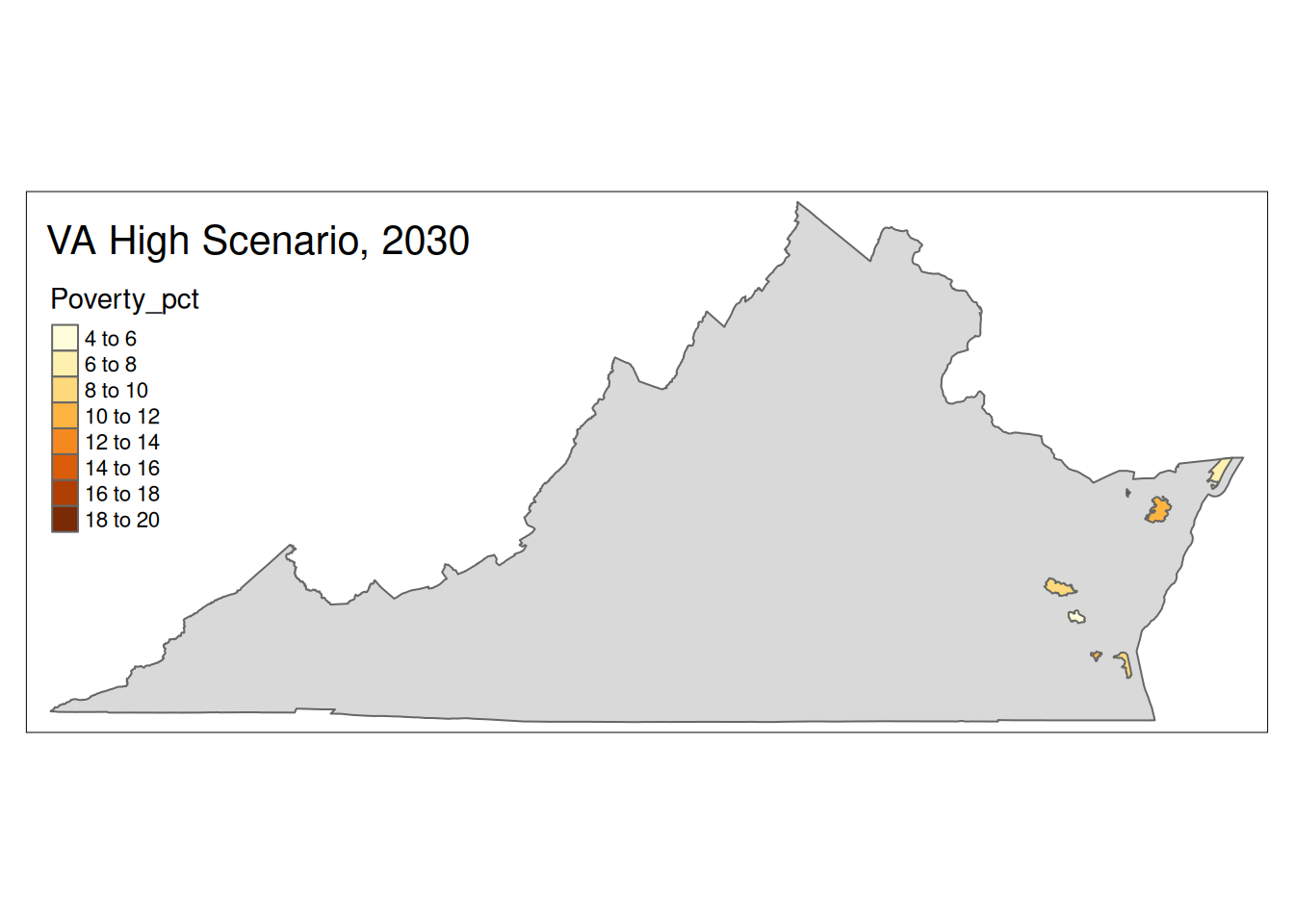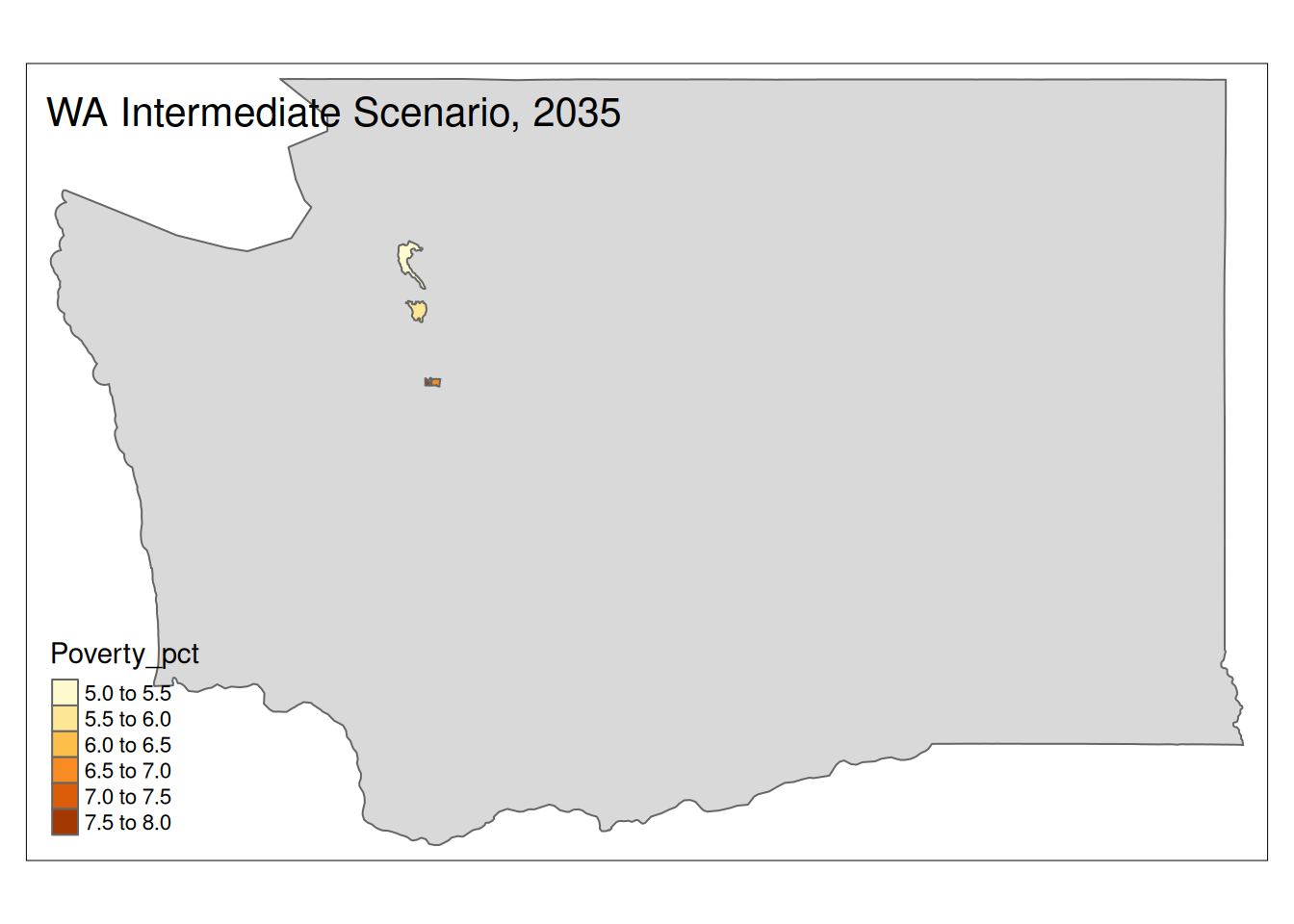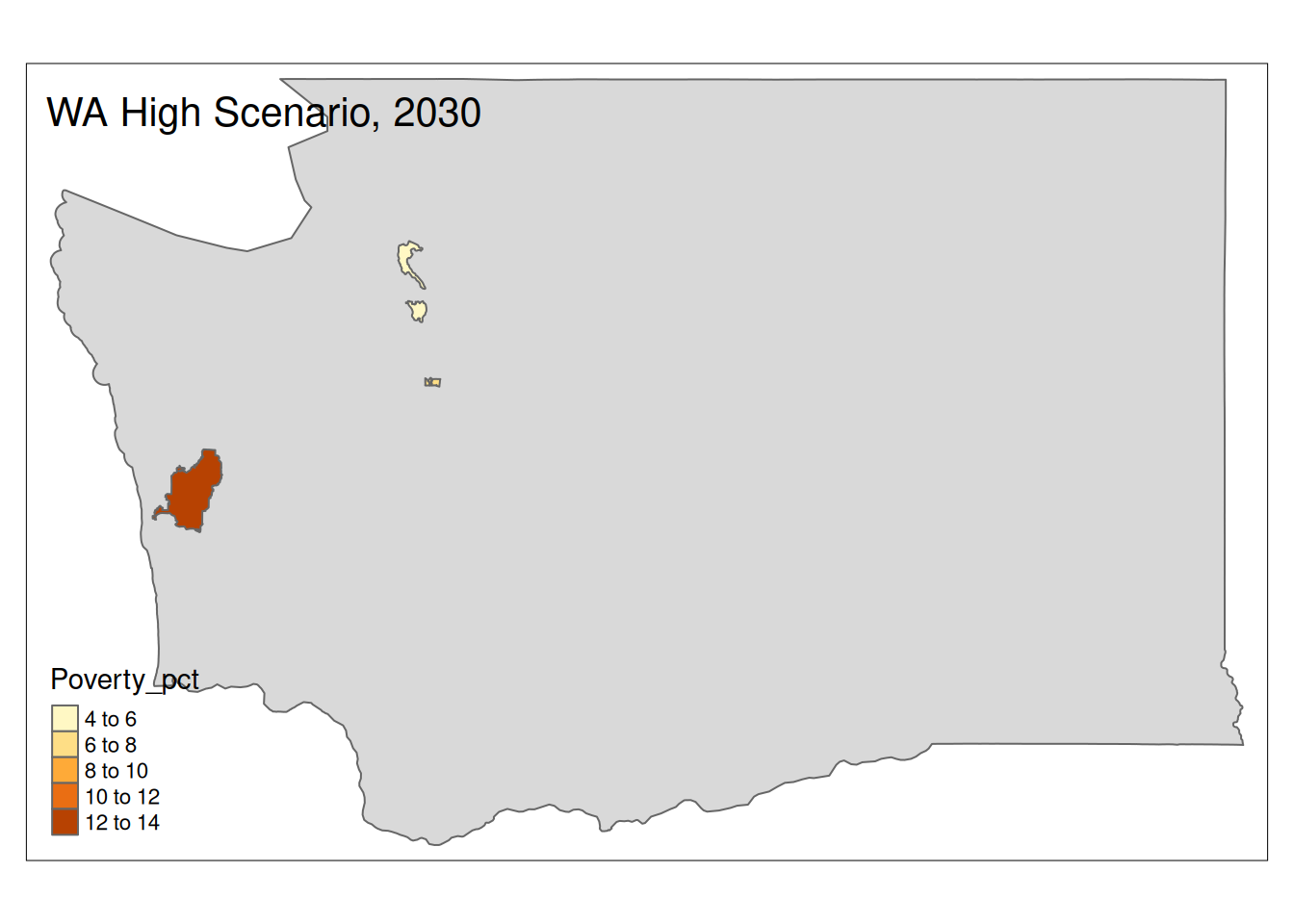library(tidyverse)
library(stringr)
library(tmap)
library(tigris)
us_geo <- tigris::states(class = "sf", progress_bar = FALSE)
googlecrs <- "EPSG:4326"
path <- "/home/ajackson/Dropbox/Rprojects/TexasDioceseCreationCare/Data/"
output_path <- "/home/ajackson/Dropbox/projects/CeationCareTaskforce/"
Curated_path <- "/home/ajackson/Dropbox/Rprojects/Curated_Data_Files/"
df <- readRDS(paste0(Curated_path, "SeaLevel/UCS_spreadsheet.rds"))Analyse Sea Level Data from UCS
Mapping
Sea Level
Supporting Activism
The Union of Concerned Scientists developed a spreadsheet of chronically inundated propeties by zipcode, climate scenario, and year. In this exercise we will try to identify the most vulnerable properties based on flood danger and average income.
The data we are working with here looks at chronic inundation (flooding at least 26 times per year), usually high-tide flooding.
Let’s look at the highest risk zipcodes
We’ll look at absolute numbers of people at risk, as well as the largest proportion at risk. We’ll restrict ourselves to the two nearer-term scenarios, “2030 High” and “2035 Intermediate”
# filter down to what is interesting
df <- df %>%
# filter(str_detect(sheet, "2030 High|2035 Intermediate")) %>%
select(sheet, Year, State, Zip=`ZIP Code`, Homes_Risk=`Homes at Risk`,
Pop_at_risk=`Population currently housed in at risk homes`,
Total_Homes=`Total Homes`, Total_Pop=`Total Population`) %>%
mutate(Homes_ratio=signif(100*Homes_Risk/Total_Homes, 3),
Pop_ratio=signif(100*Pop_at_risk/Total_Pop, 3)) %>%
filter(Total_Homes>100) %>%
filter(Total_Pop>100) %>%
mutate(Zip=as.character(Zip))Let’s get some census data by zipcode to attach to the data
v20 <- tidycensus::load_variables(2020, "acs5", cache = TRUE)
# B19013_001 MEDIAN HOUSEHOLD INCOME IN THE PAST 12 MONTHS (IN 2020 INFLATION-ADJUSTED DOLLARS)
# B17025_001 POVERTY STATUS IN THE PAST 12 MONTHS BY NATIVITY
# B19001_001 HOUSEHOLD INCOME IN THE PAST 12 MONTHS (IN 2020 INFLATION-ADJUSTED DOLLARS)
# B19025_001 AGGREGATE HOUSEHOLD INCOME IN THE PAST 12 MONTHS (IN 2020 INFLATION-ADJUSTED DOLLARS)
# B01003_001 TOTAL POPULATION
foo <- tidycensus::get_acs(geography = "zcta", # Zip Code Tabulation Area
variables = c("B19013_001", "B17025_002", "B19001_001",
"B19025_001", "B01003_001"),
year = 2020, geometry=FALSE)
# I'll merge the polygons in later
ZCTA_geom <- tidycensus::get_acs(geography = "zcta",
variables = "B01003_001",
progress_bar = FALSE,
year = 2020, geometry=TRUE)
foobar <- foo %>%
select(GEOID, variable, estimate) %>%
pivot_wider(id_cols=GEOID, names_from=variable, values_from=estimate) %>%
rename(Zip=1, Med_income=2, In_Poverty=3, House_Income=4, Total_income=5,
Total_Pop_acs=6)Let’s do a join
foo <- df %>%
left_join(., foobar, by="Zip")Some cleanup
foo <- foo %>%
filter(Homes_Risk>100) %>%
filter(Total_Pop_acs>100) %>%
mutate(Avg_income=Total_income/Total_Pop_acs) %>%
mutate(Poverty_pct=signif(100*In_Poverty/Total_Pop_acs, 3))
# Save for later
saveRDS(foo, paste0(Curated_path,"SeaLevel/UCS_data.rds"))Make maps
Two maps, 2030 High and 2035 Intermediate scenarios, color by pct in poverty.
Popup data for each zip code are the zip code, the number of homes at risk, and the ratio of homes at risk divided by total homes.
# first an interactive map for QC
# Add the geometry
foo2 <- left_join(foo, ZCTA_geom, by=join_by(Zip==GEOID)) %>%
select(-NAME, -variable, -estimate, -moe) %>%
filter(Poverty_pct>5) %>%
mutate(Poverty_pct=signif(Poverty_pct, 3)) %>%
sf::st_as_sf()
# Save for later
saveRDS(foo2, paste0(Curated_path,"SeaLevel/UCS_sfdata.rds"))
High30 <- foo2 %>% filter(str_detect(sheet, "2030"))
Inter35 <- foo2 %>% filter(str_detect(sheet, "2035"))
# map
tmap::tmap_options(basemaps="OpenStreetMap")
tmap_mode("view")
tm_shape(Inter35) +
tm_polygons("Poverty_pct", alpha=0.5, popup.vars=c("Zip",
"Homes_Risk",
"Homes_ratio")) +
tm_dots(size=0.02) +
tm_shape(High30) +
tm_polygons("Poverty_pct", alpha=0.5, popup.vars=c("Zip", "Homes_Risk",
"Homes_ratio")) # do maps by state
tmap_mode("plot")
data("World")
for (state in unique(foo2$State)) {
State <- us_geo %>% filter(str_detect(STUSPS, state))
if (nrow(Inter35 %>% sf::st_drop_geometry() %>% filter(State==state))>0){
plot <-
tm_shape(State) +
tm_polygons() +
tm_shape(Inter35 %>% filter(State==state)) +
tm_polygons("Poverty_pct") +
tm_layout(title=paste(state, "Intermediate Scenario, 2035"))
print(plot)
}
if (nrow(High30 %>% sf::st_drop_geometry() %>% filter(State==state))>0){
plot <-
tm_shape(State) +
tm_polygons() +
tm_shape(High30 %>% filter(State==state)) +
tm_polygons("Poverty_pct") +
tm_layout(title=paste(state, "High Scenario, 2030"))
print(plot)
}
}
